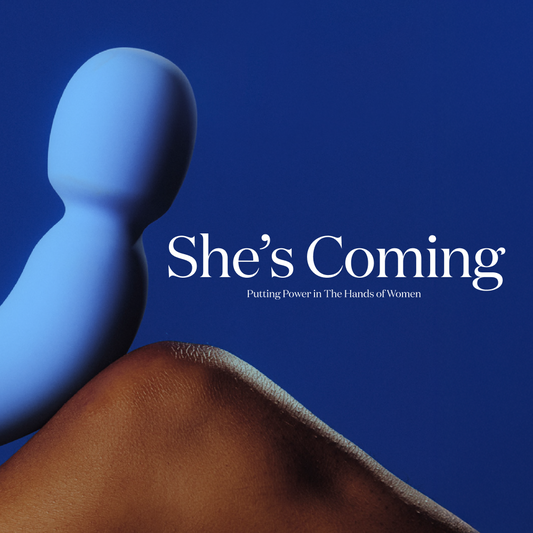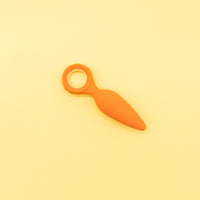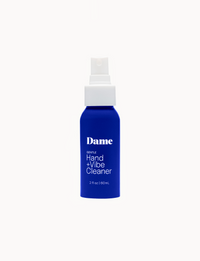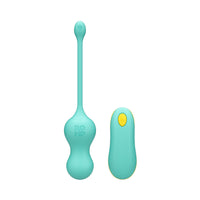Do you have a kink? Perhaps you enjoy a little (or a lot) of bondage? Some spanking, maybe? Choking? Could it be even more “out there” such as being shocked with a cattle prod (one designed to be used during sex, obviously … hopefully).
Even if none of this applies to you, I’m guessing we’ve piqued your interest. When it comes to sexual kinks, there is a kind of shroud of mystery; a devilish mystique that corners it in the category of ~taboo.~ Sure,
Fifty Shades let us look behind the curtain for a hot second (kind of), but just because BDSM is now more mainstream doesn’t mean we know that much about it.
With so
little sex education and so
much shame around sexuality in our society, it’s no wonder we don’t know more about kink. Let’s be real: most people don’t even know where to find a partner’s clitoris, let alone the origins of their fantasies and kinkier sexual desires.
With the help of some very kinky kink experts, we’ve taken a deep dive into why it is that we like what we like in bed, especially when it comes to kink. Here is what we learned.
What exactly is a kink?
Defining what a “kink” is is the first step in this whole process. “Literally anything which deviates from the norm can be considered a kink,” says Daniel Saynt, founder of
The New Society for Wellness (NSFW), a sex-positive members-only club that hosts sexual education workshops.
“A kink is an unusual sexual taste, something outside of the ‘norm’ of vanilla sexual experiences. A fetish is a sexual fixation that can become obsessive. Someone's kink can be something they enjoy, but isn't necessary for sexual pleasure. A fetish is more extreme, in that whatever is fetishized is necessary for full sexual gratification.” says
Goddess Aviva, a professional dominatrix and educator.
To be clear, kink and fetish are both totally OK and fine as long as everyone is consenting and you aren’t harming anyone.
The word fetish usually refers to sexual attraction to a conventionally non-sexual object or act (such as feet, sitting in Jello, thong underwear, fishnet stockings, being stepped on in high heels etc). Something is a fetish if you
need it present or involved in your sex life to be turned on.
For example, you might be into spanking and enjoy it as a part of your sex life. This would be considered “kinky” because it falls outside of conventional missionary, to the point, P in the V sex. But, if you become so into spanking that it is
required in order for you to become aroused or orgasm, it’s no longer just a kink, you have a spanking
fetish.
To be clear, kink and fetish are both totally OK and fine as long as everyone is consenting and you aren’t harming anyone. Mk?!
We develop kinks during many stages of life
The roots of a person’s sexual kink is subjective. We try to put people into boxes and frankly, it’s not possible to do so. Pinpointing that “one thing” that turned you towards being a Leather Daddy isn’t a one-size-fits-all background story. You might be like, “Oh, it’s because my first partner was a macho dude and wore lots of leather jackets,” but maybe not.
Developing a sexual desire doesn’t always have its roots in puberty or the first time you discovered your clitoris, nor are you necessarily “born this way, nor is it always linked to some event in your past.
There are so many types of kinks to discover, which can be attached to dozens of everyday actions.
Saynt says that he knows many people who cite being spanked as children as the reason for their predilection towards spanking during sex. “I think a lot of kinks are discovered through puberty, when pornography watching increases and more sexual acts, fantasies and fetishes are available to people.”.
Yet, not everyone has a “I have daddy issues because my father was an alcoholic, and so I have a thing for 60 year-old men who tie me up” situation going on. “For others, kinks come later in life, discovered through new sexual partners or sparked by a lull in bedroom excitement,” Saynt says. “There are so many types of kinks to discover, which can be attached to dozens of everyday actions.”
Having kinks is super common, especially when it comes to imagination
Thinking about something taboo is extremely common. In fact, pretty much everyone will have some “crazy” sexual thoughts in their lifetime. We humans have very active imaginations. Of course, thinking about it is one thing and acting on it is another. This may seem obvious, but fewer people actually act on their kinks.
“Research suggests that most people have had a sexual fantasy about something kinky before, so by that metric, most of us do seem to be a little kinky. However, when you look at the number of people who actually want to act on their kinky fantasies or the number who have engaged in kinky behaviors, those figures are quite a bit smaller. Fantasy, desire, and behavior are all different things, so it depends which one you’re talking about here,” says Dr. Justin Lehmiller, a Research Fellow at The Kinsey Institute and author of the book
Tell Me What You Want.
“I think it's very important to experiment sexually so you can discover what you like and don't like. More people have kinks than you would imagine!” says Goddess Aviva.
Research shows that nearly half of Americans have engaged in a BDSM activity of some kind.
Kinks become “kinks” for many different reasons
How does something go from being of mild, blasé interest to a full-blown kink? Again, the waters here are murky. Every single human being is different and sexuality is complex.
Lehmiller says you might develop a kink if you
try something kinky (like bondage) and find it to be a highly pleasurable experience. If you felt good about the bondage and had a crazy amazing orgasm, you’re more likely to try it again in the future. Then, it is possible that the bondage becomes a significant part of your sexual experiences going forward.
Kinks can also develop through classical conditioning principles, where an initially neutral stimulus becomes a cue for sexual arousal.
“Kinks can also develop through classical conditioning principles, where an initially neutral stimulus becomes a cue for sexual arousal,” Lehmiller explains. “For example, if you dated someone who always wore fishnet stockings on days they wanted to have sex, stockings could become a cue for arousal such that every time you see them, you get turned on.”
So, the answer to why you might like something kinky: It’s COMPLICATED AF and comes from all many different directions.
Developing a healthy relationship with your kinks
If you’re into kink and want to have it be a part of your sex life, you have a ton of options to make it happen. It’s difficult to develop comfortable, healthy relationships with sexual behaviors that aren’t conventionally accepted in society. “In order to have a healthy appreciation for kink, you need to decide what you want to explore and then take sane steps towards those experiences,” Saynt tells us.
You must remember, kink is extremely common. “Most people have had a kinky sex fantasy before, so stop feeling weird about having kinky thoughts. It’s normal to have them,” says Lehmiller. Lots of people are out there waiting to share your passion.
“Knowing there are others like you can help with self-acceptance,” says Goddess Aviva. “Having a community where you feel free to express yourself is so important to ending shame and stigma. Thankfully with the internet, people can connect around all manner of interests. There are many online communities as options: you can create a profile on Fetlife and join groups based on your particular kinks, you can create a kink twitter account and start connecting with other people posting about your same interests.”
Sharing fantasies can be a form of dirty talk that can enhance arousal, while also creating intimacy because you’re sharing secrets.
If you’re not trying to be as extreme as the Fetlife life, “you might consider sharing some of your kinky fantasies with a partner. What we see in the research is that people who are sharing their fantasies are more sexually satisfied,” says Lehmiller. “Sharing fantasies can be a form of dirty talk that can enhance arousal, while also creating intimacy because you’re sharing secrets. This doesn’t necessarily mean that you have to act on your kinky fantasies, though—simply acknowledging those fantasies and sharing them can have a number of benefits.”
There you have it. If you’re into kink, you can go forth and explore it in myriad ways. You don’t have to sit in the corner, crying, and ashamed. Live your best life!




















































